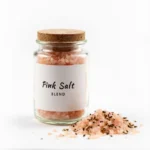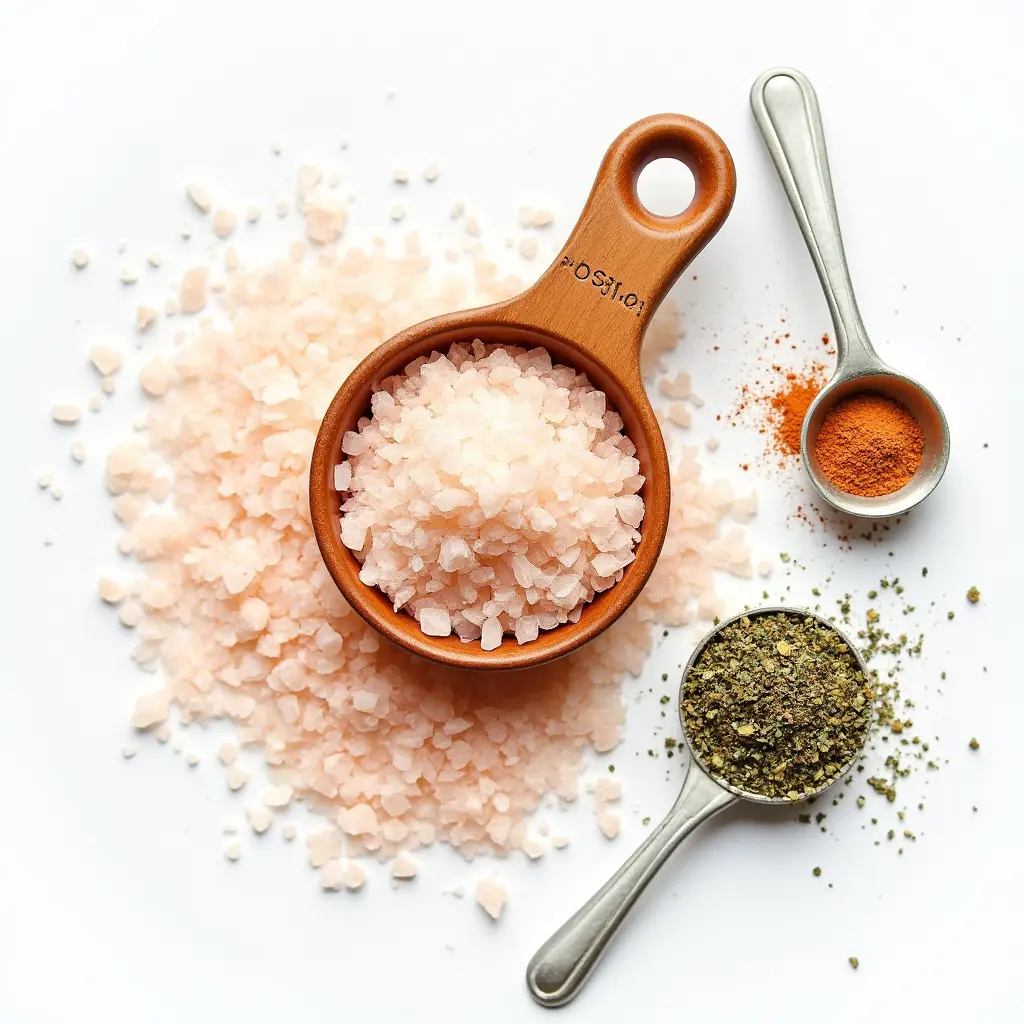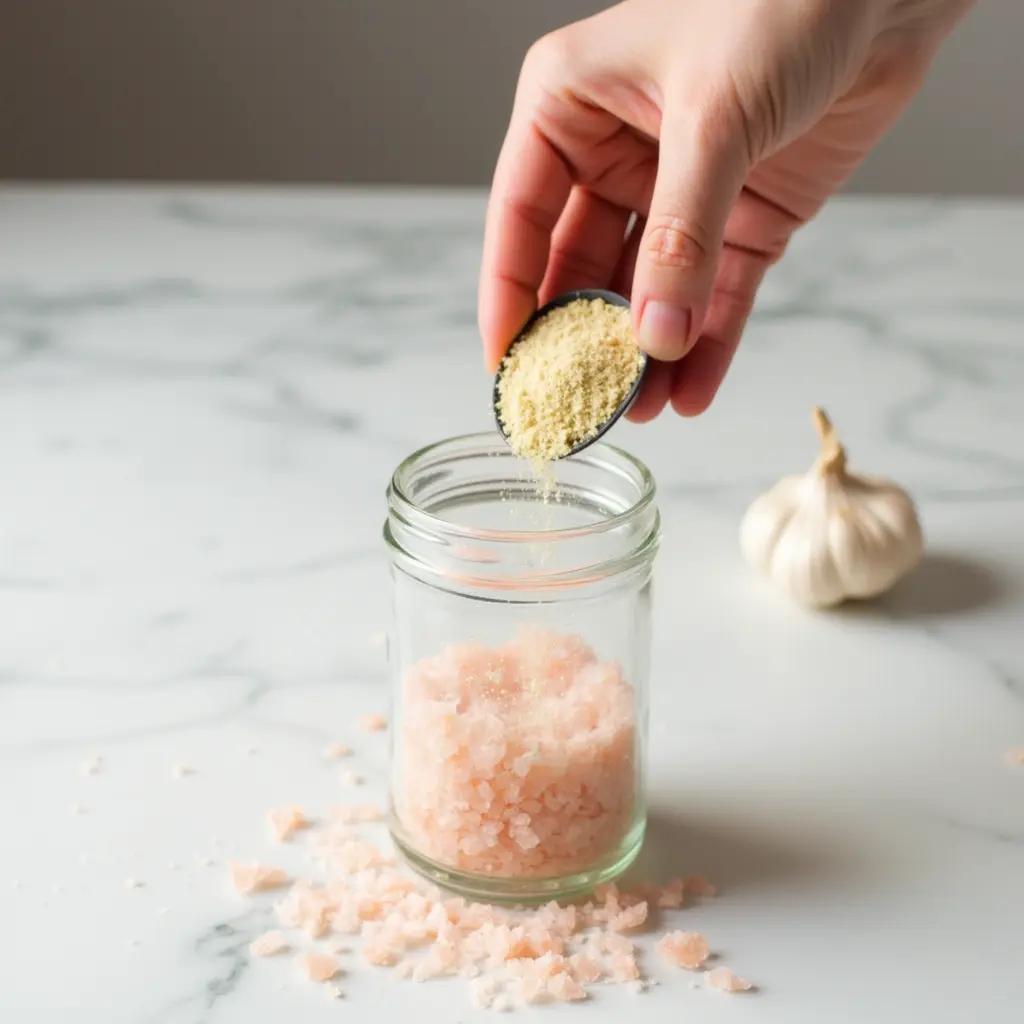A Personal Connection to Pink Salt in the Kitchen
From Grandma’s Jar to My Pantry: Pink Salt’s Place in My Cooking Life
My first memory of Pink Himalayan salt goes back to childhood. My grandmother kept a tiny jar of it hidden in the back corner of her pantry—something she used only for her special recipes. When she made her crispy roasted potatoes or Sunday meat stews, she reached for that pale pink salt with care. “It’s real salt,” she used to say. As a little girl, I didn’t understand what she meant—but I never forgot the taste.
Years later, when I stumbled upon a pouch of Pink Himalayan salt in the store, I felt that same childhood curiosity bubble up. I brought it home and tried it out in a basic vegetable sauté. What happened next was surprising. The vegetables didn’t just taste salted—they tasted brighter. The flavors opened up, and the harsh aftertaste I’d grown used to from table salt was gone.
From that moment, Pink Himalayan salt earned its spot on my kitchen counter. Now, it’s part of nearly every dish I make—be it a quick egg scramble or a more involved Keto Lasagna with Egg Wraps. What once felt like a specialty ingredient is now a daily essential.
Why I Switched from Table Salt to Pink Himalayan Salt
Like most home cooks, I grew up using iodized table salt in everything. But over time, I began noticing something wasn’t right. My soups were too salty but still tasted flat. My roasted chicken looked great but lacked depth. It wasn’t until I replaced the table salt with Pink Himalayan salt that I realized what was missing—balance.
The flavor of Pink Himalayan salt is different. It’s mild and earthy, not sharp or overpowering. It doesn’t just season—it supports the ingredients around it. One example is my go-to comfort dish: chicken and veggie soup. When I use Pink Himalayan salt instead of regular salt, the flavors seem to round out. The broth tastes more homey and full-bodied without needing extra seasoning.
But it’s not just about taste. Pink Himalayan salt comes without synthetic additives, including anti-caking agents found in regular salt. That makes it a cleaner, more natural choice—something I feel good using every day. It stays loose in the jar, dissolves cleanly in recipes, and never leaves behind that gritty residue. It just fits into real kitchen life.
When I shared my Pink Salt Recipe for Weight Loss on the blog, many readers told me they’d never thought to use it that way. But for me, it’s been part of my clean pantry shift.It’s one of those small changes that makes a big difference. Pink Himalayan salt fits easily into daily cooking, and once you taste the difference, it’s hard to go back.

Pink Himalayan Salt Vegetable Sauté
Ingredients
- 2 tablespoons olive oil
- 2 cloves garlic, minced
- 1 cup broccoli florets fresh or frozen
- 1 cup sliced carrots
- 1 cup zucchini, chopped
- ½ teaspoon Pink Himalayan salt fine grain
- ¼ teaspoon black pepper freshly ground
- 1 tablespoon lemon juice optional for brightness
Instructions
- Heat olive oil in a large skillet over medium heat.
- Add minced garlic and sauté for 1 minute until fragrant.
- Add broccoli, carrots, and zucchini. Stir to coat with oil and garlic.
- Sprinkle with Pink Himalayan salt and black pepper.
- Sauté for 6–8 minutes, stirring occasionally, until vegetables are tender but still vibrant.
- Drizzle with lemon juice if desired and serve warm.
Notes
Real Culinary Benefits of Pink Himalayan Salt
Nutritional Edge: What’s Inside Pink Salt?
One reason I feel confident using Pink Himalayan salt every day is because it isn’t just pretty—it’s naturally rich in trace minerals like calcium, potassium, magnesium, and iron. These minerals give the salt its pale pink hue and set it apart from regular table salt, which is heavily refined and often stripped of natural elements.
Even though you’re only using small amounts in a recipe, every pinch of Pink Himalayan salt supports a more natural cooking routine. Unlike table salt, it doesn’t contain synthetic additives or anti-caking agents. That’s a big plus if you’re focused on real food and minimal processing.
For example, when I make low-carb pasta, I always add Pink Himalayan salt to the boiling water. The minerals subtly enhance the flavor of the noodles without overpowering them. That kind of balanced salting is what makes this salt so useful—it brings out the food’s own character.
When you’re looking for a natural sea salt alternative, this pink variety holds its own. It’s especially appreciated by home cooks who are working with unprocessed ingredients or adjusting their diets for wellness. And for anyone watching their sodium intake, it helps that the flavor is effective in smaller amounts. You get the savory impact without needing as much salt.
Flavor Enhancer in Cooking: Where Pink Salt Shines
The culinary strength of Pink Himalayan salt lies in its versatility. It works beautifully in dry rubs, baking, soups, and sauces. Fine grain pink salt dissolves easily and blends smoothly, while coarse pink salt delivers a satisfying crunch when used as a finishing touch.
I often make a batch of roasted vegetables tossed in olive oil, garlic, and Pink Himalayan salt. The outcome is a dish that tastes earthy and full-bodied, without the metallic sting I sometimes noticed with iodized salt. The same is true when seasoning grilled meats or even enhancing a homemade soup base.
One of my favorite uses is in spice blends. I shared a seasoning mix recipe using Pink Himalayan salt that pairs perfectly with grilled dishes like grilled chicken caesar wraps. The salt balances herbs and spices without dulling them.
It also plays well in acidic dishes. For example, in my lemon caper chicken piccata, the pink salt doesn’t clash with the lemon juice—it softens the sharpness and lets the ingredients shine.

If you enjoy building homemade seasonings, this salt is ideal. I used it recently in my own twist on how to make salt and vinegar seasoning and the result was tangy, bright, and clean-tasting. There’s something satisfying about knowing exactly what’s in your food, especially when it starts with something as simple as salt.
Cooking with Pink Salt Every Day
Recipes and Uses: Everyday Meals Made Better
One of the best things about Pink Himalayan salt is how easy it is to incorporate into everyday cooking. You don’t need to be a chef to make the most of it. I use it in everything from seasoning scrambled eggs to finishing a bowl of soup. It works quietly in the background—enhancing flavor, not distracting from it.
For breakfast, I sprinkle a pinch of fine Pink Himalayan salt over avocado toast or mix it into eggs before scrambling. It lifts the natural flavors and doesn’t leave that sharp, overly salty taste behind. In baking, fine grains dissolve smoothly, making it an excellent choice for savory muffins, scones, and even protein-packed recipes like Sourdough Protein Pancakes.
When it comes to lunch or dinner, it’s my go-to for seasoning chicken, beef, and seafood. I especially love using it in dry rubs and spice mixes. For example, in my Pink Salt Recipe for Weight Loss Remedy, the salt helps balance citrus and heat, bringing out each layer of flavor.
If you enjoy comforting soups, Pink Himalayan salt works beautifully in dishes like Leftover Chicken Noodle Soup. A teaspoon of coarse or fine salt added during cooking brings the broth to life without needing bouillon cubes or flavor packets.
It also performs well in dry dishes. I’ve used it to season baked vegetables, pan-seared fish, and even homemade roasted nuts. When making a quick marinade, combining Pink Himalayan salt with olive oil, garlic, and lemon creates a base that works with just about anything—chicken, tofu, or veggies.

Smart Cooking: Tips for Storing and Handling Pink Salt
Because Pink Himalayan salt is natural and doesn’t contain chemical preservatives, how you store it matters. I recommend keeping it in an airtight glass jar. Ceramic containers work too, as long as the lid seals tightly. Avoid metal tins, since salt can corrode some types of metal over time.
Humidity is the biggest enemy. Keep the jar away from your stovetop, dishwasher, or anywhere it could be exposed to steam. I also suggest using a dry spoon when scooping from the jar—moisture can lead to clumping or hardening.
If you cook regularly, it helps to keep both fine and coarse Pink Himalayan salt on hand—but in separate containers. I keep a small dish of the fine salt by my stove for quick seasoning and a grinder filled with coarse crystals for topping salads or roasted veggies. That way, the right texture is always within reach when I need it.
Over the years, I’ve learned that keeping your seasonings fresh and visible helps simplify your cooking process. And when it comes to Pink Himalayan salt, proper storage keeps its flavor and mineral value intact.

You can also find us on Facebook & Pinterest!
FAQs + Final Thoughts
What makes Pink Himalayan salt different from regular table salt?
The main difference lies in how it’s made. Pink Himalayan salt is unrefined and hand-mined from ancient salt deposits in the Himalayan mountains. It contains trace minerals like magnesium, calcium, and potassium—giving it that soft pink hue and subtle earthy taste. Regular table salt, on the other hand, is processed, bleached, and often mixed with anti-caking agents and iodine. In cooking, that means table salt can taste sharper, while Pink Himalayan salt blends in smoothly and naturally with most dishes.
Can Pink Himalayan salt be used in cooking?
Absolutely. It’s one of the best salts you can cook with daily. Use fine Pink Himalayan salt for baking, soups, and sauces. Use coarse grain salt in rubs, spice blends, or sprinkled over roasted vegetables. I rely on it in recipes like Pink Salt Recipe for Weight Loss and even in casual dishes like scrambled eggs or a quick sauté. It seasons food with a balanced flavor—never harsh or overpowering.
Are there health benefits to bathing with Pink Himalayan salt?
While some people use it in bath soaks or scrubs, this article focuses only on Pink Himalayan salt as a cooking ingredient. We’re here for the flavor—not the spa. If you’re looking to reduce processed food and eat more cleanly, switching to Pink Himalayan salt in your meals is a step in the right direction.
What is a Pink Himalayan salt lamp used for?
Salt lamps are a popular home décor item that some believe improve air quality or mood. But those have nothing to do with culinary use. When buying salt for food, always choose food-grade Pink Himalayan salt, not decorative rocks.
How should Pink Himalayan salt be stored for long-term use?
Store it in a sealed, airtight container—glass or ceramic work best. Keep it in a cool, dry place, away from moisture and steam. I suggest storing fine and coarse grains separately and using a dry spoon each time you scoop. This keeps your salt fresh and easy to use in any dish—from seasoning grilled chicken to adding the final touch to roasted veggies.
Conclusion: A Pinch of Pink That Makes Every Meal Better
Switching to Pink Himalayan salt wasn’t a major life change—it was a simple decision that made my meals taste better and feel cleaner. It didn’t come with a long ingredient label, and I didn’t need a lesson to learn how to use it. Just one try, and I could taste the difference.
Whether I’m cooking for my family, testing a new seasoning blend, or prepping a comfort meal like Keto Hot Dog Chili, this salt is always within reach. It brings out natural flavors, complements every ingredient, and fits beautifully into everyday kitchen life.






7 thoughts on “Benefits and Uses of Pink Himalayan Salt: A Natural Touch for Everyday Cooking”